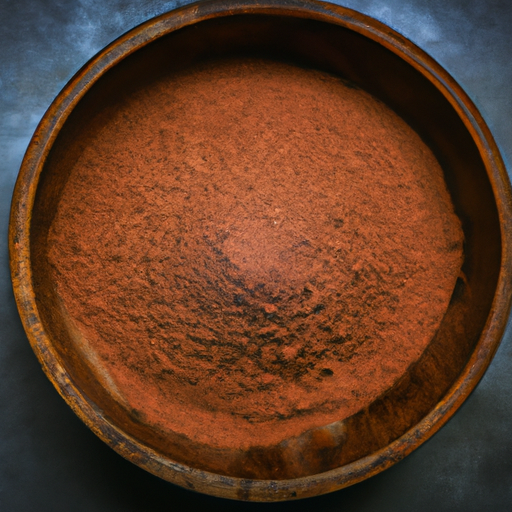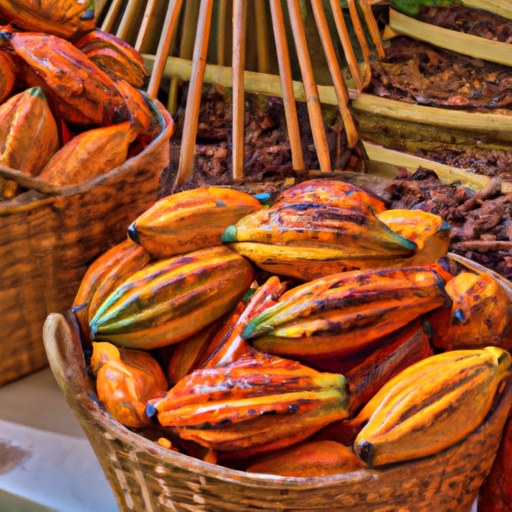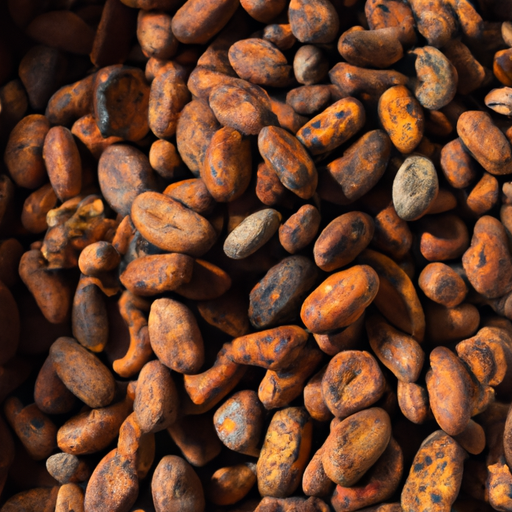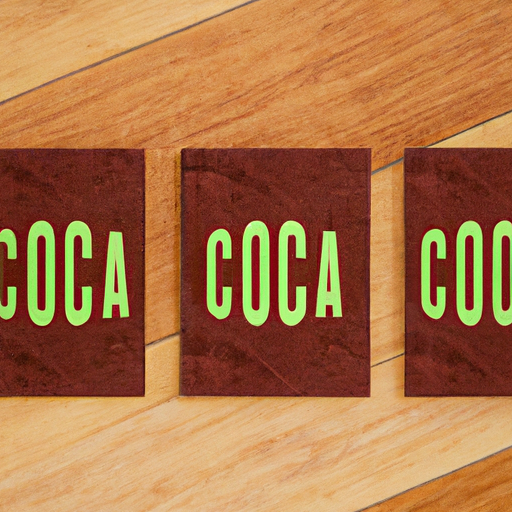I know you may be wondering – what exactly is ‘non-alkalized raw cacao powder’? I can assure you, I was just as perplexed when I first encountered this term. However, delving into the realm of cacao has been a enlightening experience.
So, here’s the deal: non-alkalized raw cacao powder is essentially the purest form of cacao you can get your hands on. It hasn’t undergone any sort of alkalization process, which means it retains all of its natural goodness.
But why does that matter? Well, it turns out that the alkalization process alters the flavor, texture, and even the nutritional profile of cacao. By opting for non-alkalized raw cacao powder, you’re getting a product that’s bursting with antioxidants, minerals, and a rich, complex flavor.
Plus, it opens up a whole new world of culinary possibilities. So, if you’re ready to take your cacao game to the next level, buckle up because we’re about to explore everything there is to know about non-alkalized raw cacao powder.
Key Takeaways
- Non-alkalized raw cacao powder is a healthy addition to any diet.
- It is packed with nutrients and antioxidants.
- Non-alkalized cacao powder provides higher levels of antioxidants and nutrients compared to alkalized cacao powder.
- Some potential benefits of non-alkalized raw cacao powder include antioxidants, enhanced mood and energy, improved cardiovascular health, and rich nutrients.
The Origins of Cacao and Its Processing Methods
The journey of cacao begins in the lush rainforests of South America. Here, the precious cacao beans are carefully harvested and undergo a series of traditional processing methods. These methods ultimately transform the beans into the delightful non-alkalized raw cacao powder.
Cacao farming practices play a crucial role in ensuring the quality of the beans. Farmers employ sustainable techniques, such as shade-grown farming, which protects the delicate cacao trees from harsh sunlight.
After harvesting, the cacao beans are fermented and dried. This crucial step allows the beans to develop their distinct flavors. Once fermented and dried, the beans are then roasted and ground into a fine paste.
This paste is then pressed to separate the cocoa solids from the cocoa butter. This separation process results in the creation of cacao powder. The cocoa solids are what give the powder its rich flavor, while the cocoa butter adds a smooth and creamy texture.
Understanding alkalization and its effects on cacao is essential for appreciating the unique characteristics of non-alkalized raw cacao powder. Alkalization is a process that involves treating the cocoa beans with an alkaline substance, such as potassium carbonate. This process can alter the flavor and color of the cacao powder, giving it a milder taste and a darker appearance.
By choosing non-alkalized raw cacao powder, you can experience the true essence of cacao in its purest form. The natural flavors and vibrant colors of the cacao beans are preserved, providing a more intense and complex taste experience.
Understanding Alkalization and Its Effects on Cacao
Understanding alkalization and its effects on cacao is crucial in making informed choices about which type of cacao powder suits individual preferences and dietary needs. Alkalization is a process that alters the natural state of cacao, potentially changing its effects on the body. This process involves treating cacao powder with an alkaline substance, typically potassium carbonate, to modify its flavor, color, and texture.
One of the primary effects of alkalization is the reduction of cacao’s acidity, resulting in a less bitter and more mellow taste. This change in flavor can be desirable for individuals who prefer a smoother and less intense cacao experience. In addition to altering the taste, alkalization also affects the color of cacao. This process darkens and enriches the color of cacao powder, making it visually appealing and enhancing the appearance of food products that contain cacao.
While alkalization can enhance the taste and appearance of cacao, it is important to understand the differences between non-alkalized and alkalized cacao powder. Non-alkalized cacao powder retains its natural acidity and flavor profile, providing a more intense and complex taste. On the other hand, alkalized cacao powder offers a milder and less acidic flavor. The choice between these two types of cacao powder depends on personal preferences and dietary considerations.
In the subsequent section, we will explore the differences between non-alkalized and alkalized cacao powder in more detail, highlighting their distinct characteristics and potential uses.
Non-Alkalized vs. Alkalized Cacao Powder: What’s the Difference?
Explore the contrasting characteristics and effects of alkalized and non-alkalized cacao powder to better understand which option suits your taste and dietary preferences.
-
Alkalized cacao powder undergoes a process called alkalization, where it is treated with an alkaline substance like potassium carbonate. This process reduces the acidity of the cacao, resulting in a milder flavor and darker color. However, it also diminishes some of the natural antioxidants and nutrients found in raw cacao.
-
Non-alkalized cacao powder, on the other hand, is made from raw cacao beans that have not been treated with alkaline substances. This means it retains its natural acidity, intense flavor, and nutritional value. It is rich in antioxidants, vitamins, and minerals, making it a popular choice among health-conscious individuals.
Understanding the origins of cacao cultivation and the history of cacao processing provides valuable insights into the differences between alkalized and non-alkalized cacao powder.
Moving forward, let’s delve into the health benefits of non-alkalized raw cacao powder.
Health Benefits of Non-Alkalized Raw Cacao Powder
Indulging in this dark delight can bring a slew of nourishing benefits to your well-being. Non-alkalized raw cacao powder, also known as natural or unprocessed cacao powder, is packed with nutrients and antioxidants that promote good health. It is important to note that non-alkalized cacao powder is different from its alkalized counterpart in terms of processing and health benefits. While alkalized cacao powder undergoes a process to reduce its acidity, non-alkalized cacao powder retains its natural acidity and therefore preserves more of its nutrients.
To give you a clearer picture, here is a table comparing alkalized and non-alkalized cacao powder:
| Alkalized Cacao Powder | Non-Alkalized Cacao Powder | |
|---|---|---|
| Processing | Treated with alkali | Unprocessed |
| Nutrient Content | Lower | Higher |
| Antioxidants | Decreased | Increased |
Non-alkalized raw cacao powder can be used in a variety of culinary applications, such as baking, smoothies, and homemade chocolate. However, it is important to note that excessive consumption of cacao powder, even in its non-alkalized form, may have health risks. Now let’s delve into the nutritional profile of non-alkalized raw cacao powder.
Nutritional Profile of Non-Alkalized Raw Cacao Powder
The nutritional profile of non-alkalized cacao powder is a rich blend of vitamins, minerals, and antioxidants that can enhance your overall well-being. Incorporating this superfood into your diet can provide numerous nutritional benefits. Here are five reasons why you should consider adding non-alkalized raw cacao powder to your pantry:
-
High in antioxidants: Cacao powder is abundant in flavonoids, which act as powerful antioxidants, protecting your body from free radicals.
-
Rich in vitamins and minerals: It is a good source of magnesium, iron, and zinc, essential for various bodily functions.
-
Boosts mood and energy: Cacao powder contains natural compounds that stimulate the production of endorphins and enhance mental focus.
-
Supports heart health: The flavonoids in cacao powder may help lower blood pressure and improve blood flow, reducing the risk of heart disease.
-
Versatile ingredient: Non-alkalized raw cacao powder can be used in a variety of recipes, such as smoothies, desserts, and even savory dishes.
Incorporating non-alkalized raw cacao powder into your diet can be a delicious and nutritious way to support your well-being.
How to Incorporate Non-Alkalized Raw Cacao Powder into Your Diet
One way to spice up your recipes and give them a healthy twist is by incorporating non-alkalized raw cacao powder. This superfood is packed with nutrients and antioxidants, making it a great addition to any diet. Here are some creative recipes using non-alkalized raw cacao powder:
| Recipe | Ingredients | Instructions |
|---|---|---|
| Cacao Smoothie Bowl | – Non-alkalized raw cacao powder – Frozen bananas – Almond milk |
1. Blend all ingredients until smooth. 2. Pour into a bowl and top with your favorite toppings like berries and nuts. |
| Cacao Energy Balls | – Non-alkalized raw cacao powder – Dates – Nuts – Coconut flakes |
1. Blend all ingredients in a food processor until well combined. 2. Roll into small balls and refrigerate for at least 30 minutes. |
| Cacao Avocado Mousse | – Non-alkalized raw cacao powder – Avocado – Maple syrup – Vanilla extract |
1. Blend all ingredients until creamy. 2. Serve chilled and garnish with fresh berries. |
While non-alkalized raw cacao powder has numerous health benefits, it’s important to be aware of potential side effects. Consuming large amounts may lead to digestive issues, increased heart rate, or migraines in some individuals. It’s always best to start with small amounts and monitor your body’s response.
Next, let’s explore where to find non-alkalized raw cacao powder and how to incorporate it into your diet seamlessly.
Where to Find Non-Alkalized Raw Cacao Powder
In my previous discussion about incorporating non-alkalized raw cacao powder into your diet, I provided some delicious and healthy ways to enjoy this superfood. Now, let’s talk about where to find non-alkalized raw cacao powder and the benefits of using it.
-
Health food stores: Look for specialty health food stores that carry a wide range of organic products.
-
Online retailers: Many online retailers offer a variety of non-alkalized raw cacao powder options, making it convenient to purchase from the comfort of your own home.
-
Farmers markets: Local farmers markets often have vendors who sell natural and organic products, including non-alkalized raw cacao powder.
-
Co-ops: Community food co-ops are known for their commitment to providing organic and sustainable products, making them a great place to find non-alkalized raw cacao powder.
Using non-alkalized raw cacao powder in your recipes can provide numerous benefits, such as higher levels of antioxidants and nutrients. Now, let’s move on to the next section where I will share some tips for storing non-alkalized raw cacao powder.
Tips for Storing Non-Alkalized Raw Cacao Powder
When it comes to keeping your non-alkalized raw cacao powder fresh and flavorful, here are some handy tips for proper storage. Firstly, it is important to store your cacao powder in an airtight container to prevent moisture and odors from affecting its quality. Secondly, keep it in a cool, dark place like a pantry or cupboard, away from direct sunlight and heat sources. This will help preserve its natural flavors and nutrients. Additionally, avoid storing it near strong-smelling foods, as cacao powder easily absorbs odors. Lastly, always use a clean, dry spoon when scooping out the powder to prevent contamination and clumping. By following these tips, you can ensure that your non-alkalized raw cacao powder stays fresh and vibrant, enhancing the taste and benefits of your recipes. Now, let’s move on to frequently asked questions about non-alkalized raw cacao powder.
Frequently Asked Questions about Non-Alkalized Raw Cacao Powder
Curious about the secrets behind that rich, velvety indulgence you adore? Dive into the delightful world of non-alkalized raw cacao powder and uncover the answers to your frequently asked questions.
-
The benefits of consuming non-alkalized raw cacao powder:
- Packed with antioxidants: Non-alkalized raw cacao powder is rich in flavonoids and polyphenols, which help fight free radicals and protect against oxidative stress.
- Enhanced mood and energy: The natural compounds in cacao can boost serotonin levels, promoting feelings of happiness and well-being.
- Improved cardiovascular health: Cacao powder contains heart-healthy nutrients like magnesium and potassium, which support a healthy heart and lower blood pressure.
- Rich in nutrients: Non-alkalized raw cacao powder is a good source of iron, calcium, and fiber, providing essential nutrients for overall well-being.
-
How to make homemade non-alkalized raw cacao powder products:
- Smoothies and shakes: Add a spoonful of non-alkalized raw cacao powder to your favorite smoothie or protein shake for a delicious and nutritious boost.
- Baked goods: Incorporate cacao powder into your homemade brownies, cookies, or cakes for a decadent chocolate flavor.
- Hot chocolate: Mix non-alkalized raw cacao powder with hot milk or plant-based milk for a comforting and healthy hot chocolate drink.
- Energy balls: Combine cacao powder with nuts, dates, and other ingredients to create tasty and energizing snacks.
Explore the world of non-alkalized raw cacao powder and enjoy its numerous benefits while creating delicious homemade treats.
Frequently Asked Questions
Does non-alkalized raw cacao powder have a different taste compared to alkalized cacao powder?
Non-alkalized raw cacao powder has a different flavor profile compared to alkalized cacao powder. It retains more of its natural bitterness and fruity notes. Additionally, non-alkalized cacao powder tends to have higher levels of antioxidants and nutrients.
Can non-alkalized raw cacao powder be used as a substitute for alkalized cacao powder in recipes?
Yes, non-alkalized raw cacao powder can be used as a substitute for alkalized cacao powder in recipes. It retains its natural taste and has the added benefits of higher antioxidants and nutrients.
Is non-alkalized raw cacao powder more expensive than alkalized cacao powder?
Non-alkalized raw cacao powder tends to be pricier than alkalized cacao powder due to its higher quality and more natural processing. However, the taste of alkalized cacao powder may be preferred by some individuals.
Are there any potential side effects or risks associated with consuming non-alkalized raw cacao powder?
I will discuss potential health risks and recommended dosage associated with consuming non-alkalized raw cacao powder. It is important to be aware of these factors to ensure safe consumption.
Can non-alkalized raw cacao powder be used for making hot chocolate or other beverages?
Non-alkalized raw cacao powder, like a burst of rich flavor, is ideal for baking. When it comes to beverages, however, alkalized cacao powder may be preferred as it dissolves more easily and has a smoother taste.
What is the Relationship Between the Taste of Raw Cacao Beans and Alkalanized Raw Cacao Powder?
The raw cacao beans’ flavor profile is complex and intense, featuring a combination of fruity, nutty, and earthy notes. When raw cacao beans are alkalized to create raw cacao powder, the taste becomes milder and less bitter, offering a smoother and more versatile flavor for various culinary applications.
Conclusion
In conclusion, non-alkalized raw cacao powder is a treasure trove of health benefits waiting to be explored. Its natural state ensures that you reap the maximum nutritional benefits, without any added processing.
Just like a hidden gem, this pure cacao powder brings a burst of flavor and richness to your recipes, making them truly irresistible.
So, go ahead and unlock the potential of this magical ingredient in your kitchen, and indulge in its goodness with every bite. Your taste buds will thank you for this delectable adventure.










